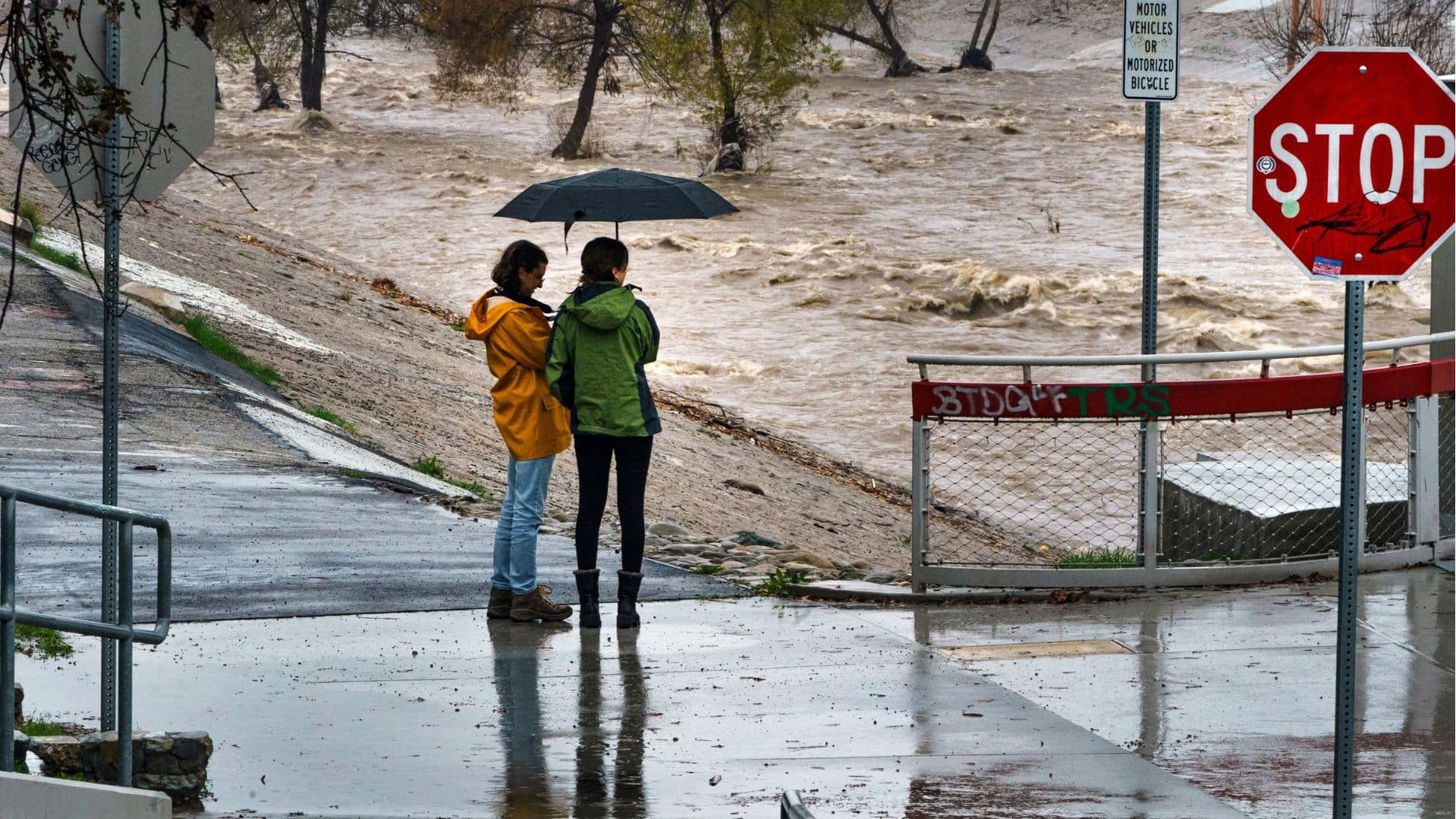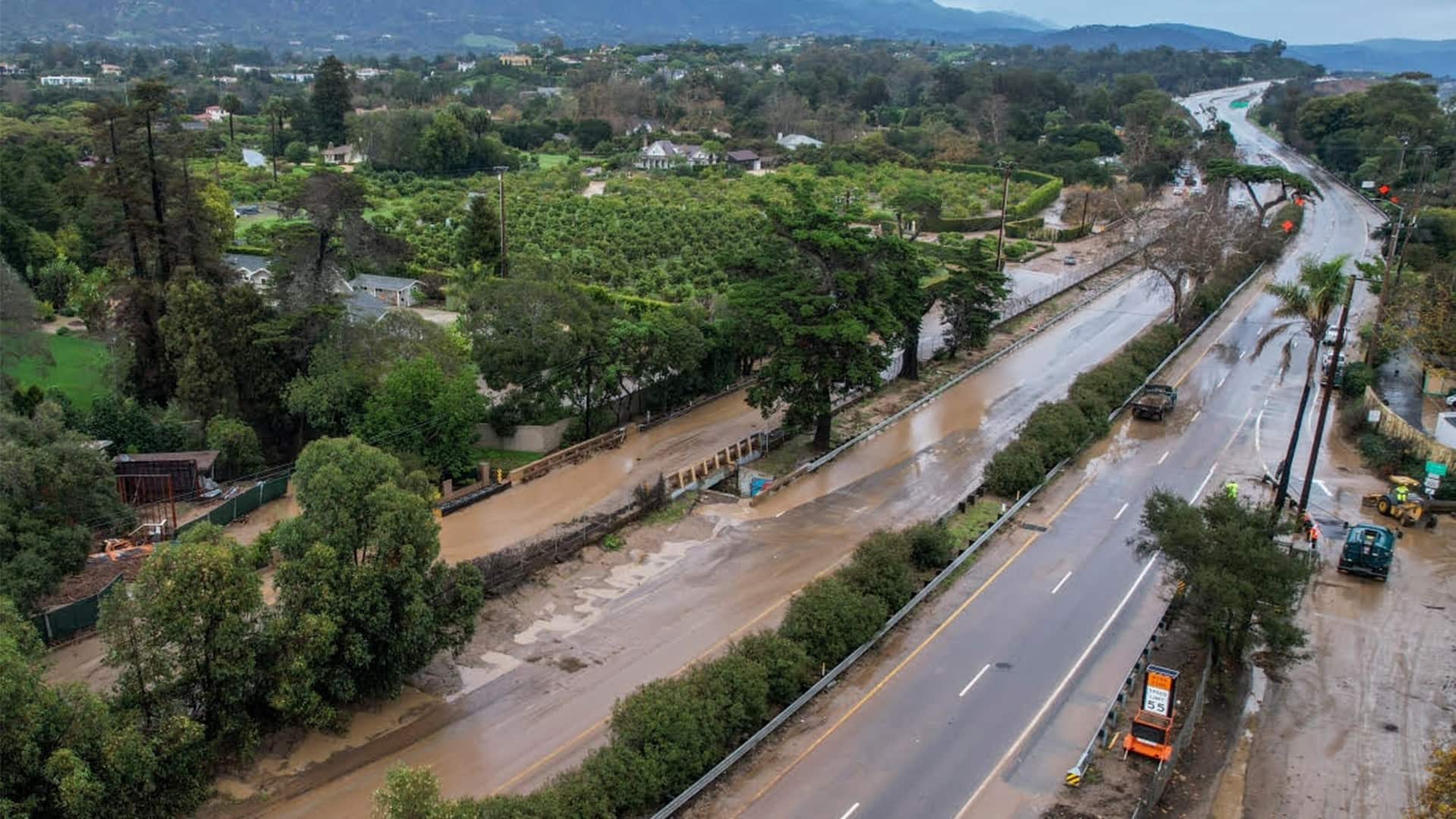The earth under Dennis Lebow's gumboots is saturated.
He's in the Salinas Valley in California, about an hour south of San Jose. The valley is often referred to as the "salad bowl of the world" as it's one of the most productive agricultural areas in the U.S. Most of Canada's lettuce, strawberries and tomatoes are grown in its fertile soil, according to California's Department of Food and Agriculture.
Like other parts of the state, it's been drenched with rain almost every day between the end of 2022 and mid-January, thanks to a string of moisture laden atmospheric rivers that have developed on the coast, bringing extraordinary flooding, mudslides and damaging winds to millions of Californians. At least 20 deaths have been linked to the storms.
The deluge, which has dropped more than 94 trillion litres of water on the state since Dec. 24, according to one metrologist, probably should have taken Lebow's mind off his job of managing finite water resources amid a drought for Reiter Berry Farms, one of the largest berry producers in the world. But it hasn't.

Water will always be scarce here.
"It's been bittersweet," he said.
"We need the rain. We benefit from the rain. But we have a lot of hardship when we get so much rain so quickly."
Unfortunately, most of the water that fell in the state flowed into the ocean, said Jay Lund, a professor of civil and environmental engineering at the University of California, Davis. That's because the infrastructure that helps California store and manage water, like large reservoirs, is cumbersome and largely unable to cope with intense and rapidly changing weather, made more frequent by human-induced climate change, he said.
Some of the largest and most important components of the state's framework for containing and transporting water were built almost 100 years ago. The Colorado Aqueduct, for instance, which moves water from the Colorado River to Southern California, was built in the 1930s. So it's no surprise that "aging, damaged, or increasingly risk-prone" infrastructure is an ongoing issue, according to California's Water Supply Strategy.

Lingering drought
Recent rainfall put just a small dent in California's severe water shortages, but it wasn't enough. The state has been in a period of drought for three years now.
Even after the drenching rains, about half the state still faces "severe drought," according to monitoring by the National Integrated Drought Information System.
All that uncaptured water in the middle of a drought begs the question: how can California store more water when it's wet, to use in the long, dry spring and summer?
Given that agriculture uses 80 per cent of the state's water, according to the California Department of Resources, it's a dilemma that Californians, and global consumers of their products, hope smart people can solve.
"We have two water problems that we have to worry about every year. One is floods and the other is drought," said Lund. "And we have to worry about them every year, no matter how wet it is or how dry it is."
Aging infrastructure

A lot of California's vast water infrastructure, like aqueducts, reservoirs and dams, were built for twentieth century hydrology, not for the more pronounced periods of drought and intense rain seen today.
It's perplexing but even in a chronically dry place like California, water reservoirs are not allowed to hold 100 per cent of their capacity.
That's because the basins really serve two purposes: To store water but to also protect lives by capturing rain and preventing flooding during storms.
In response to the increasing instances of "weather whiplash" — a National Oceanic and Atmospheric Administration (NOAA) term to describe rapidly changing weather, new forecasting technology is empowering managers of the aging structures to be more agile to do both, Karla Nemeth, director of the state's Department of Water Resources, told CBC News.

Water stored in four of the state's reservoirs, including Northern California's Lake Mendocino and Folsom Lake, is now being managed in tandem with weather forecasts, something which hadn't happened before.
Previously these facilities would be made to preemptively release water in the fall and winter to make room for future storms, said Nemeth. If the storm didn't occur, the hard to replace water would be lost. Better forecasting means water managers will now only release water from a reservoir if a major storm is forecasted for the days ahead.
Agencies, including NOAA, are helping provide that crucial data for decision makers with pilots flying into atmospheric rivers for research.
California's "infrastructure has to be better positioned to capture these storm events," Nemeth said.

'Water is political'
But it's a balancing act.
Much of the infrastructure used to capture water in the state has come at the expense of natural ecosystems. The redirection of moving water by levees and reservoirs isn't great for salmon habitat or migratory birds and underscores the need for competing interests to consider all the creatures that need access to this increasingly scarce resource, said Lund.
"Water is political in California because it's important," he said.

New practices
Because farming uses so much water in California, the industry has been forced to innovate and find ways to use less.
In some cases, this means doing things that haven't been done before, including a project called Managed Aquifer Recharge, or MAR for short. It's an elegant title for what is a big hole in a field surrounded by drains. It works by channeling water run-off, if it rains, into an unlined dirt basin. The idea is over time the water can penetrate the soil and flow back into the groundwater basin that sits below the farms for future use.
There's a lot of potential for it in a place like California because huge, potentially rechargeable, underground aquifers can be found under about 40 per cent of its land, according to the Water Education Foundation, a non-profit group based in Sacramento.
Supporters say it's a particularly good idea for farms in places like the Salinas Valley because over pumping of groundwater from the basin, also called groundwater overdraft, has led to an increase in the amount of seawater or salt found in the aquifers. That's bad news for everyone.

A farm Dennis Lebow manages installed a MAR site in its fields in early 2013. He said being able to top up the water basin when it rains has helped create more water security and certainty for agriculture.
"You can't count on it raining all the time, yet we have to produce crops here every year for the whole world," he said. "This recharge basin is basically supplying the irrigation that we need to farm this ranch sustainably and not have much impact on the groundwater."
The project is led by the University of Santa Cruz and local water management agencies. They help map the geology and hydrology of an area and approach private land owners about having a MAR collection point on their land. The system includes a metering system to incentivise its use, operating like a normal water meter that starts to count backwards when water is put back into the ground.
A farmer would then get a rebate on the returned water. The rebate is part of an incentive to get land owners to consider turning a small part of their highly productive land into groundwater capture.
The success of projects like this will make or break some of the most important farmland in California, but the sector is still expected to face profound strain.
Even the Department of Water Resources acknowledges "the footprint of agriculture in California is going to shrink," Nemeth said.
The state's growing area could decline by up to 15 per cent in 25 years, according to Lund.

It's a lot farms to lose in a place the world relies on for food but Lund finds some assurance about California's uncertain future in the pioneering efforts of settlers who built the state's water infrastructure all those years ago.
"They had to really from scratch build up water law systems, irrigation technology, irrigation districts, all forms of human organization that did not exist with the people that moved here," he said.
"They had to adapt to it, which I think is kind of interesting for what we might have to do as the climate changes around us."

















